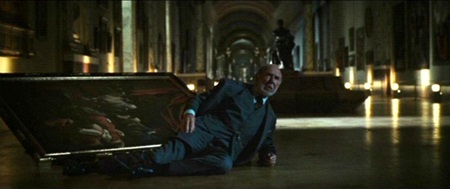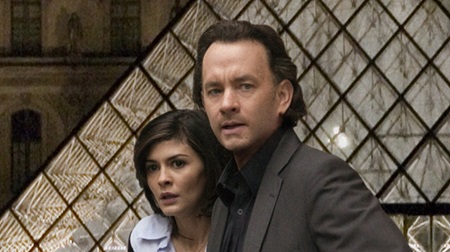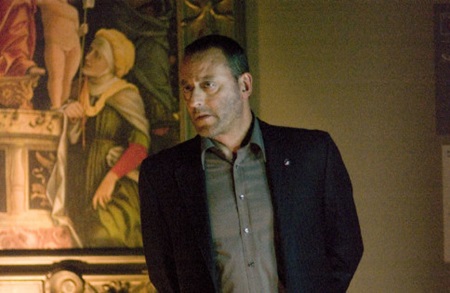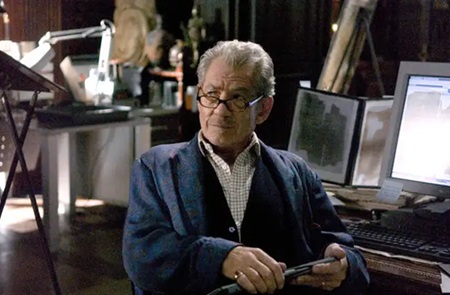The mystery, thriller movie The 39 Steps (1935) is an Alfred Hitchcock film loosely based on the 1915 novel The Thiry-Nine Steps by John Buchan. Charles Bennett and Ian Hay garner screenwriting credit for this movie taking place in England and largely in Scotland.

This story of The 39 Steps is one of the wrong man, Canadian Richard Hannay as portrayed by Robert Donat, suspected of murder getting mixed up with an attractive blonde, Pamela as portrayed by Madeleine Carroll, while hoping to clear his name. The death in play is that of one Annabella Smith, as portrayed by Lucie Mannheim, who turns to Hannay for help before coming to her end after implicating him; Smith introduces to Hannay the notion of an abstract and unexplained phrase The 39 Steps.

The opening confusion with Annabella Smith begins in London at a music hall event featuring Mr. Memory; Wylie Watson portrayed Mr. Memory. It’s while Smith fleeing to Hannay’s bedroom and getting murdered that Hannay retrieves a map of the Scottish Highlands held by Smith; that map leads Hannay to a building labeled Alt-na-Shellach in the village of Killin, Scotland. Hannay first meets Pamela aboard the Flying Scotsman, learning at Waverly Station in Edinburgh, Scotland of his being suspected of murdering Smith. Hannay escapes police custody at the Forth Bridge when Pamela aims to support his capture.

The police ultimately follow Hannay to the the croft of John and Margaret, where the couple has granted Hannay an evening of respite. Margaret, as portrayed by Peggy Ashcroft, gives Richard the coat of her husband John, as portrayed by John Laurie, to assist Hannay in making an escape. The notion of an extended police chase in cinema gains an expression multiple ways through The 39 Steps, leading for now to Alt-na-Shellach.

It is at the home there that Hannay encounters Professor Johnson and his wife; Professor Johnson and Mrs. Louisa Johnson were portrayed by Godfrey Tearle and Helen Haye, respectively. A bullet meant for Hannay at the home of the Johnson’s misses its mark when a hymnal in the coat jacket of John, as presented to him by Margaret, saves Robert Hannay’s life. Pamela, intending to reveal Robert Hannay to police again, leads the pair on a trip with police impersonators aiming to take the pair to Inverary, Scotland.

Cleverness by Hannay helps Robert and Pamela, handcuffed together, escape their captors once again. The pair make their way to the London Palladium, where the movie comes to a satisfying conclusion. The film’s ongoing chase sequences resolve provided an interesting mix of humor and directorial winking. Owing to the overall enjoyment that was experienced, I grant The 39 Steps as directed by Alfred Hitchcock 3.75-stars on a scale of 1-to-5.
Matt – Saturday, May 4, 2024












































